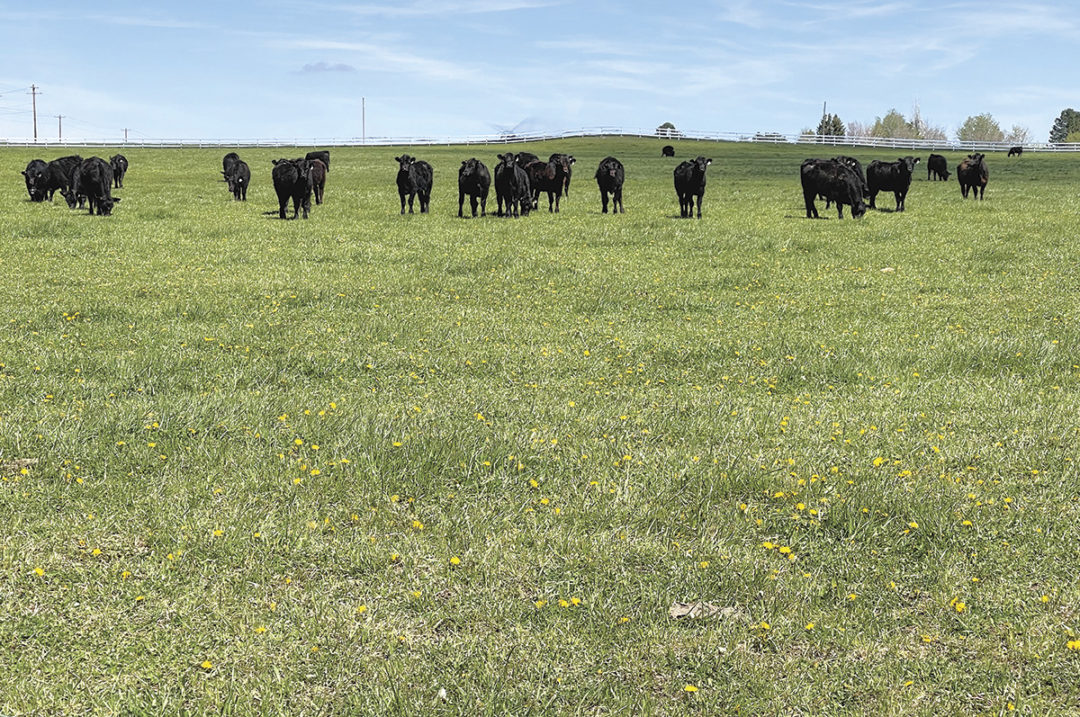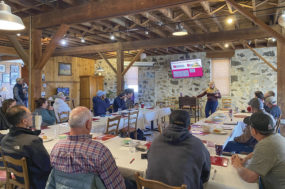Competition is a wonderful thing. Competition has produced Michael Jordan, Billie Jean King and Secretariat. In a pasture, however, competition can work against a farmer by destroying clover and producing a mat of low-yielding bentgrass. Why?
A perennial pasture is like any baseball field or basketball court – a competitive arena where, instead of home runs, winning a pasture competition means survival and reproduction. Forage plants must compete for space, light, water and nutrients.
During this contest, plants must stay healthy and strong, or else they will fall away and be replaced by more aggressive, robust plants. And just like any other athletic event, the outcome can be altered by strategy and execution.
Let’s look at the common practice of grazing pastures in the very early spring. A pundit once noted that throughout most of the U.S., the grazing season coincides perfectly with the baseball season. Whoa! So let’s focus our sports analysis on those first few weeks of pasture spring training. …
In the early spring, soil temperatures range between 40ºF and 50ºF – warm enough for grass growth but not yet warm enough for most legumes. (In western Oregon, legumes only grow well after soil temperatures reach 50ºF.) Almost overnight, pastures seem to explode into that bright green color of young growth. The grass blades are small, succulent and highly nutritious.
As we walk out to the fields after a long winter, we see the beginnings of the spring. We see the first green growth in the pastures and promptly put our animals out there to graze it. They are happy campers. They consume as much grass as they can – and each day, they do it again and again and again. We are happy because our animals look good, and we don’t have to feed hay. We know that even the Chicago Cubs win a few games during spring training. All seems well with the world.
But many spring grasses are decidedly not happy. They are desperately fighting to survive. Those young plants must initially subsist on storage compounds from their seeds or roots. Only when the emerging shoots grow more leaf surface area do they begin to photosynthesize enough nutrients for the entire plant. Until then, however, the young plants continue to draw down their reserves.
And along come our hungry sheep and cattle that happily bite off those young leaves or pull them from the ground. The animals then move on, searching for more leaves. Meanwhile, our grass plants send out a fresh set of leaves and draw more nutrients from their reserves.
What happens if our animals stay in the same paddock? They soon find those new shoots again – after all, what else do they have to do all day? And for those unfortunate plants, the cycle goes around once more. And again, they must draw nutrients from their reserves.
Until there are no more reserves. Or until those young plants are so weakened that they die from a nematode infestation or a rust or any other stress they could normally withstand. The practical result is that, over time, plants under stress tend to disappear from the sward.
Which plants? Our best plants. When given a choice, our animals tend to graze the fast-starting, most-palatable species and varieties. These are the plants we would like to retain in our pastures. When we allow our animals to hammer them mercilessly in the spring, we create an environment that does not favor them. Weakened plants cannot compete well for sunlight and nutrients against healthier, less-palatable plants. In effect, we have designed a competitive arena that kills the wrong plants.
Meanwhile, faced with all those delicious shoots of our best plants, our animals tend to ignore the plants that are less palatable. Like, in our area, tall fescue, bentgrass and thistle.
These species continue to grow because the animals don’t eat them. As these plants mature, they become more fibrous compared with the other, younger species – and, therefore, even less palatable and nutritious. Their shade makes it harder for smaller plants to obtain sunlight and creates a humid understory that encourages the growth of fungi and other leaf diseases that can further stress smaller plants.
During the early spring, some of these smaller plants are clovers because legumes begin their growth considerably later than grasses. Although clovers can manufacture their own nitrogen through the rhizobium bacteria in their roots, they still need sunlight for photosynthesis. If a clover seedling is shaded out by the taller grasses, its ability to compete for nutrients is crippled.
Over time, the winners of this pasture competition are the less palatable, early maturing plants. These species successfully propagate themselves in the sward, while the other, more desirable forage species struggle to survive.
Many ranchers routinely try to renovate their older pastures by planting mixtures of perennial ryegrass, annual ryegrass, orchardgrass, tall fescue, subclover, red clover and white clover. These are good, dependable forage species. But after only four or five years, those fields have evolved back into stands of tall fescue, bentgrass and thistle, with only a little subclover. Just look around.
The problem is set-stocking livestock onto early spring growth. Set-stocking in the early spring is both understocking and overstocking at the same time – understocking because animals have the luxury of selecting their favorite plants and ignoring other plants, but overstocking because there are too many animals consuming the palatable plants, and the animals can relentlessly hammer those plants into the ground.
A solution? One good strategy is to keep animals off those very early pastures, despite temptation. Locate an alternative site for those animals, like a sacrifice area. Use those hooves to help replant that area – and then, when animals can finally be allowed onto the spring pastures, plant lots of fenceposts. Fencing controls grazing. Move animals off a paddock when plants are grazed down to an appropriate residual mass. Controlled grazing makes animals consume all the plants to a target residual mass. That forces the less desirable plants like bentgrass and thistle to compete directly against the ryegrasses on a level playing field (so to speak) – and the ryegrasses will usually win. The clovers will also have a better chance to flourish because they aren’t shaded out. And the bentgrasses are not permitted to go to seed quickly, which slows down their establishment.
And the Chicago Cubs? I’m not sure if planting fenceposts will help them win a pennant. But it can’t hurt.








